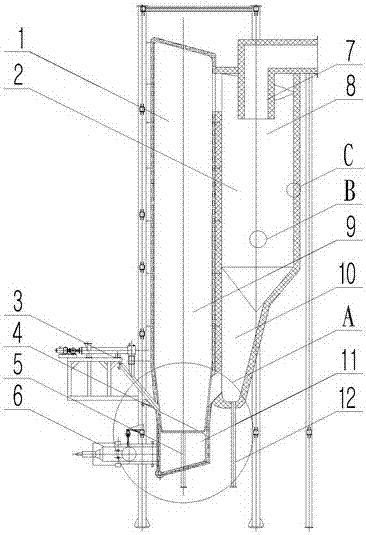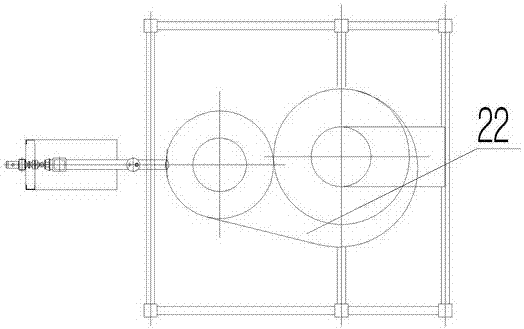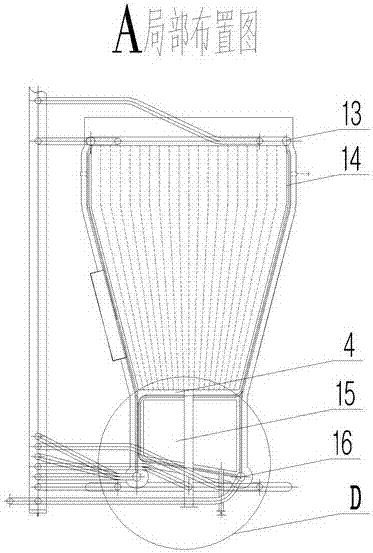Heat storage fluidized combustion furnace for treating VOCs waste gas adsorbing solid waste
A solid waste, boiling combustion technology, applied in the direction of combustion method, combustion type, incinerator, etc., can solve the problems of inability to guarantee purification conditions, material layer can not be too thick, coking and other problems
- Summary
- Abstract
- Description
- Claims
- Application Information
AI Technical Summary
Problems solved by technology
Method used
Image
Examples
Embodiment Construction
[0026] The present invention will be further described below in conjunction with the accompanying drawings and specific embodiments.
[0027] Such as figure 1 , figure 2 , image 3 , Figure 4 , Figure 5 , Figure 6 , Figure 7 As shown, a regenerative fluidized combustion furnace for treating and adsorbing VOCs waste gas and solid waste is characterized in that it includes a furnace 1 , a regenerative return chamber 2 , and a screw feeding assembly 3 .
[0028] The furnace 1 includes a furnace body 9, a water-cooled air distribution plate 4, a water-cooled air chamber assembly 11, an ignition burner 6, and a slag discharge pipe 5. The water-cooled air chamber assembly 11 includes a cylindrical water-cooled wall 14, an upper header 13. The lower header 16, the water-cooled air distribution plate 4, and the air chamber 15. The water-cooled air distribution plate 4 includes a water-cooled pipe 18, an air distribution plate 17, and a wind cap 19. A part of the water-cool...
PUM
 Login to View More
Login to View More Abstract
Description
Claims
Application Information
 Login to View More
Login to View More - R&D
- Intellectual Property
- Life Sciences
- Materials
- Tech Scout
- Unparalleled Data Quality
- Higher Quality Content
- 60% Fewer Hallucinations
Browse by: Latest US Patents, China's latest patents, Technical Efficacy Thesaurus, Application Domain, Technology Topic, Popular Technical Reports.
© 2025 PatSnap. All rights reserved.Legal|Privacy policy|Modern Slavery Act Transparency Statement|Sitemap|About US| Contact US: help@patsnap.com



